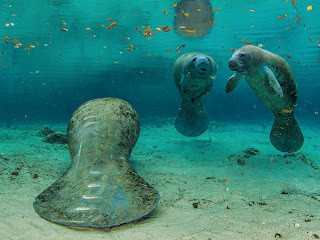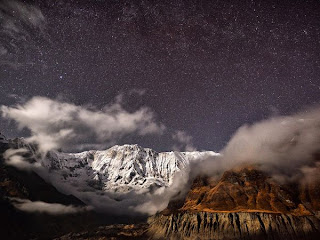Some other Way from Eliot Rausch on Vimeo.
Living with Parkinson's Disease: Poetry,Photography, Art, Skiing, Dancing, Animal Rescue, Wild Animal Conservation; Other Interests
Friday, March 29, 2013
It's Not How Many TImes You Get Knocked Down...
Embedded below is a new short video from Eliot Rausch (posted on Vimeo) about a fighter finding his way back from drug addiction. "It's not how many times you get knocked down," George Custer said, "it's how many times you get up!" Rausch is a talented film maker! Here is the video:
Tuesday, March 26, 2013
Catch Up and a Story
So, Henry and I went to our first photography class together Sunday afternoon. It's a pre-visualization workshop with Richard Dischler, who has an amazing background in photography. Beyond that, however, he is an amazing human. He says his goal is to change the world by showing it a photograph of itself (one step at a time). He listened to me briefly and started to talk about the need to communicate well (what can I say....it was an accurate read). So, here I am - an absolute beginner photographer in a class with a famous photographer. I guess I better start learning how to use the manual controls on my new DSLR. Holy Cow - what have I gotten myself into?
Embedded below is a video about a surf photographer who goes to Indonesia to test out a camera at the request of its manufacturer. While surfing, he meets a traveling surfer and from there a story blossoms.
Embedded below is a video about a surf photographer who goes to Indonesia to test out a camera at the request of its manufacturer. While surfing, he meets a traveling surfer and from there a story blossoms.
Sunday, March 24, 2013
National Geographic Photos
Henry and I are starting a photography class today titled, " Learning to See," the ultimate basis for great[/improved works in any kind of art. Consequently, I'm embedding the following photos I've admired from National Geographic:
APRIL 30, 2009
MARCH 20, 2013
MARCH 14, 2013
MARCH 12, 2013
Arno River, Florence
Moonlit Mountains, Nepal
APRIL 30, 2009
Mount Everest's North Face, Tibet
Photograph by Jimmy Chin
A climber gazes at the north face of Mount Everest. Tibet, People's Republic of China
MARCH 20, 2013
Cherry Blossoms, Japan
Photograph by Diane Cook and Len Jenshel, National Geographic
In Japan the nighttime viewing of cherry blossoms in spring, like these at Kyoto’s Hirano Shrine, is a special event. "The cherries' only fault: the crowds that gather when they bloom," wrote Saigyo, a 12th-century poet.
MARCH 19, 2013Manatees, FloridaPhotograph by Paul Nicklen, National Geographic
Propeller scars mark this manatee—graphic evidence of a too-close encounter with a boat. About one in four of Florida's 360 manatee deaths in 2012 resulted from collisions. Slow-speed zones help, but some boaters resent the restrictions.
MARCH 14, 2013
Lake Baikal, Siberia
Photograph by Carolyn Drake, National Geographic
The peaks of Burkhan Rock rise like twin spires from Siberia’s Lake Baikal, the world’s largest body of fresh water. People across Asia believe that spirits associated with Baikal live in this rocky outcropping on Olkhon Island, destination of a steady stream of pilgrims.
MARCH 12, 2013
Vaux-le-Vicomte Gardens, France
Photograph by Diane Cook and Len Jenshel, National Geographic
A fete like this, in the sumptuous gardens of Vaux-le-Vicomte, marked the beginning of the end for owner Nicolas Fouquet in 1661. Louis XIV came, saw, and coveted; he confiscated the property and imprisoned Fouquet.
Arno River, Florence
Photograph by Heather Anne Campbell, My Shot
Spending the holidays traveling means fewer tourists and more clouds. This photo was taken on Christmas in Florence, Italy. Very few people were walking around, and the air was very still.
Moonlit Mountains, Nepal
Photograph by Max Seigal, My Shot
I watched as the beautiful full moon rose at Annapurna Base Camp, lighting up the entire landscape as if it were daylight. It provided the perfect lighting for this photo as I set up my tripod and shot one of the few majestic 8,000-meter peaks on this planet, surrounded by a starry night backdrop.
Kyrgyz Nomads, AfghanistanPhotograph by Matthieu Paley, National Geographic
Kyrgyz herders adore their cell phones, which they acquire by trading and keep charged with solar-powered car batteries. Though useless for communication—cellular service doesn't reach the isolated plateau—the gadgets are used to play music and take photos.
From NutritionFacts.org:
How Chemically Contaminated Are We?
 Every few years the U.S. Centers for Disease Control and Prevention measures the levels of chemical pollutants in the bodies of thousands of Americans from across the country. What did the latest report tell us about our toxic burden? Find out in my 2-min. video CDC Report on Environmental Chemical Exposure.
Every few years the U.S. Centers for Disease Control and Prevention measures the levels of chemical pollutants in the bodies of thousands of Americans from across the country. What did the latest report tell us about our toxic burden? Find out in my 2-min. video CDC Report on Environmental Chemical Exposure.
The official U.S. Presidential Cancer Panel report from the National Cancer Institute on reducing environmental cancer risk was also released recently. Quoting from the report:
“With the growing body of evidence linking environmental exposures to cancer, the public is becoming increasingly aware of the unacceptable burden of cancer resulting from environmental and occupational exposures that could have been prevented through appropriate national action.”
Every year in the United States there are one and a half million new cases of cancer a year striking men, women, and children. Unfortunately, the report concludes:
“the grievous harm from this group of carcinogens has not been addressed adequately by the National Cancer Program. The American people—even before they are born—are bombarded continually with myriad combinations of these dangerous exposures. The Panel urges you, Mr. President, most strongly to use the power of your office to remove the carcinogens and other toxins from our food, water, and air that needlessly increase health care costs, cripple our Nation’s productivity, and devastate American lives.”
Strong words, but what can we do? They don’t give much dietary guidance. Basically they just say choose organic and free-range:
“Exposure to pesticides can be decreased by choosing, to the extent possible, food grown without pesticides or chemical fertilizers and washing conventionally grown produce to remove residues. Similarly, exposure to antibiotics, growth hormones, and toxic run-off from livestock feed lots can be minimized by eating free-range meat raised without these medications if it is available. Avoiding or minimizing consumption of processed, charred, and well-done meats will reduce exposure to carcinogenic heterocyclic amines and polyaromatic hydrocarbons.”
Of course even without industrial pollutants, the saturated animal fat and cholesterol may still contribute to heart disease (as evidenced by atherosclerosis in mummies of Egyptian rulers who likely ate rich diets).
For a more detailed account of which foods are most contaminated, see Food Sources of PCB Chemical Pollutants and Dioxins in the Food Supply.
My previous videos on organic foods include Can Pesticides Be Rinsed Off? and Cancer Fighting Berries.
I also have videos on livestock growth hormones and feed additives.
For more on processed meat, check out any of my 25 videos on the subject including When Nitrites Go Bad, Bacon and Botulism, and Prevention Is Better Than Cured Meat.
-Michael Greger, M.D.
PS: If you haven’t yet, you can subscribe to my videos for free by clicking here and watch my 2012 year-in-review presentation Uprooting the Leading Causes of Death.
Image credit: otodo / Flickr
Friday, March 22, 2013
Ricefield Collective
Posted from Kickstarter.com:
Ricefield Collective crafts handmade knitted accessories that keep indigenous people on their ancestral land.
- Launched: Mar 19, 2013
- Funding ends: Apr 19, 2013
The Beginning

I met Jean Mundiguing at a viewpoint overlooking the Philippine rice terraces in June 2011, which the Ifugao indigenous people have been farming by hand for an estimated two thousand years. Jean pointed to her own terrace in the distance, and over the next few hours, we talked about her and her neighbors' lives. Many people were abandoning their land because they had no steady source of income, and their fields produced barely enough rice to feed their own families. Jean was afraid that she would end up in the same position.
I was knitting while we talked, and I told her I would teach her so that she can maybe make money by selling hats to local tourists. I came back the next summer and spent six weeks teaching her and six other women in her village how to knit, but the numbers grew as they began to teach each other. It became clear that the only way for the project to be sustainable is if we harnessed the power of the Internet to bring their products to a world market. That was how Ricefield Collective grew from a local initiative to a Kickstarter campaign.
Product Development

When I left Ifugao and got online, I talked about the project with Anna Maltz, the textile artist and knitwear designer who taught me how to knit. She worked with me to design a knitwear collection inspired by Ifugao, and we also contacted Stephen West, who agreed to have us produce one of his classic patterns that fit our existing ideas, and to visit us in the Philippines to come up with new designs.
The people of Ifugao have been farming terraces by hand for centuries. They are both highly sensitive to beauty and unfazed by manual labor, two qualities that allow them to make high-quality handknits. Combine this with the talent of top-level knitwear designers and a director who is fluent in both the languages and cultures of the Philippines and the West, and we have the promise of products that possess both the depth of tradition and the delight of innovation.
Our Products

As tokens of appreciation for contributing to our campaign, we've prepared limited edition hats, cowls, and sets from our collection.
Each of our products is made from the softest American wool from Quince & Co. in Portland, Maine. They come with a picture of the woman who made the item along with a tag that's signed and numbered by her. You can wear them knowing that they're not only beautiful and warm but are also made by someone happy.
UPWARD HAT

This uniquely-structured beanie's bold, soaring line will make you stand out in the sea of plain beanies, and shows off the curve of your apex. It's a no brainer. Be one of the First Fifty to pledge (our BFF's in other words) and get it for $25!
SPIRAL SLOUCHY

If there's such a thing as a slouchy overachiever, this slouchy is it! The Spiral melds innovation with a classic elegance in its swirling structure. It's impossible not to get caught up. It's our thanks to you for a $40 pledge.
WINDSCHIEF HAT

One of acclaimed indy designer and WestKnits Fun Squad leader Stephen West's signature patterns, the Windschief Hat is available for the first time as a finished item. We chose it with Stephen because its twists and turns go perfectly with our collection. Be one of the First Fifty pledgers (again, that's a BFF!) and get it for $45.
TERRACE COWL

Red is the major color of the Ifugao people, so what better way for us to celebrate it than to make this Kickstarter Special Edition cowl. Inspired by a local basketweave pattern, the limited edition of 200 for our Kickstarter campagin are the only ones we will ever make of this cowl in red. Get it for a pledge of $65.
ANY TWO HATS

For those of us who can't decide on a color, or want to get a hat for ourselves as well as a friend, then this pledge is the way to go. Get any two hats from our collection for $85.
CLIMBING CABLE SET

Like our women to their land, this pom hat and plush cowl simply belong together. They're united by rising cables that make them both super-warm and comforting. The other Ifugao color is black, but the heathered charcoal gray of this set reminded us so much of the hand-dyed black textiles in Ifugao with their variations in color that we decided to also make this a Kickstarter Special Edition. This version of the set in Charcoal will be the only time that this set will be produced in this color in a limited edition of 100. Get it for $100.
We have other product rewards for larger pledges, such as a set we call LOTS OF PRESENTS because it's one of each piece from our collection, which you can get for $275. We also have the LOTS AND LOTS OF PRESENTS because you get each piece from our collection in all colors for $500. Then we have the SUPER-CUSTOMIZED set, where you get everything from the $500 pledge level plus a custom-accessory made just for you along with a digital video with our members thanking you for your amazing support. You can get this set for a pledge of $1,000.
Our Special Reward:
Spend Time in an Ifugao Village

Enjoy the warmth and industry that first made Meredith fall in love with Ifugao. Jean keeps a room in her house for when her relatives visit to help with planting and harvest. We'll fly you to Manila and book a bus ticket for you to Banaue, where we will take you to the village of Uhaj and let you stay with her. You can join her in making rice she farmed herself, and you can come to the field where she maintains her crops. She'll even take you on a tour of the neighboring village and other rice terraces in the area. If she happens to be busy, another one of our collective members will host you.

Thanks!
Special thanks to the following people who have made this project possible:
Team: Anna Maltz, Design Director • Kris Sugatan, Public Relations • Igor Shteynberg, Technical Director • Stephen West, Design Collaborator • Larilyn Sanche, Video Editor • Alex Cunningham, Cameraman • Rizalyn Nagabe, Administrative Support
Testers and Samplemakers: Dora Lenchuk, Akshata Dhareshwar, Margaret McKinnis, Alli Cornett, and Purlewe RieMill
Knit4Life Photo Supporters: Todd Shalom, Claro de los Reyes, Adam Rompel, Marinus van der Veen, Roderick Kimball, Jess Falcone, Jessica Metzler, Antonia Ruppel, Aze Ong, Dav Clark, Audia Denton, Xine Yao, Shoan Yin Cheung, Cait Randerson, Samantha Taylor, Penny Dewind and Don Kyle, Susan and Noa Kwee, Aida Grøndahl Thalberg, Pien Maltz-Klaar, Saskia Maltz, Cherise Silvestri and Oscar, Adedayo Ajibade, Fanny Boiten, and Dawn Allison
Models: Vic, Drew Nauman, Jillian Marshall, Nikolas Hoepker, Patrick Ayscue
Also Thanks To: Jung Hwa Song, Enongo Kasongo, Aryol, Kaisa, Audia Denton, Tanya Zimbardo, Meredith Johnson, Christina Newhard, Courtney Bolton, Kaisa Kaakinen, Melody Ramsey, and Ori Heffetz
Risks and challengesLearn about accountability on Kickstarter
We work in a village that is far from the city and subject to typhoons and landslides. Though we do not foresee delays in production because of this, nature is unpredictable, as we ourselves in the United States have learned over the past few years.
We are working extremely hard to prepare the women we work with for the upcoming production cycle. We're confident that our members are sufficiently trained to produce our patterns, but because this is our first collection, we also wish to keep our expectations realistic. It is for this reason that we limit the number of items in the collection, because we want to ensure that we can deliver our products by our fulfillment date.
Subscribe to:
Posts (Atom)







